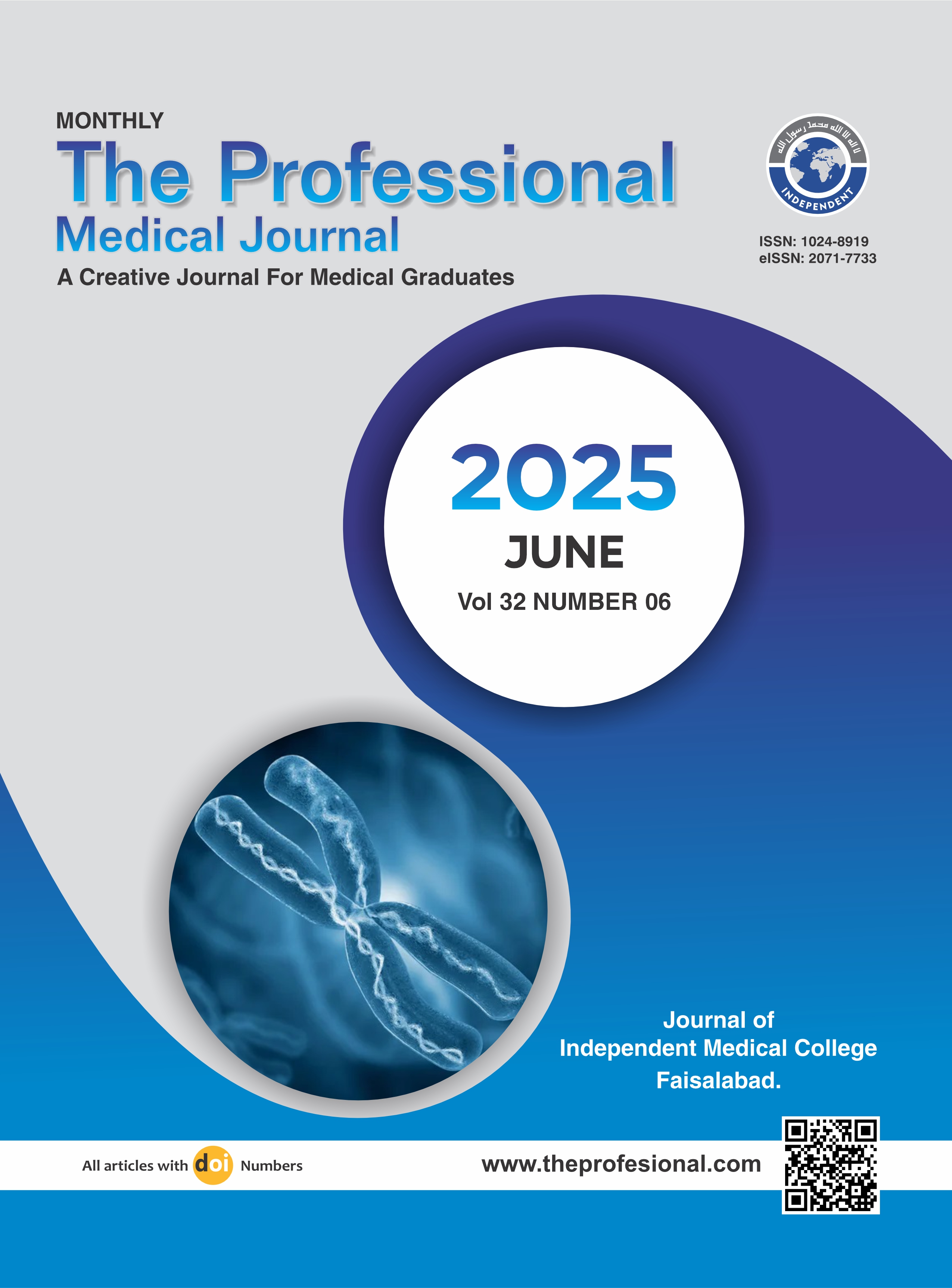Changes in intraocular pressure (IOP) after uncomplicated phacoemulsification in diabetic vs non-diabetic patients.
DOI:
https://doi.org/10.29309/TPMJ/2025.32.06.9115Keywords:
Cataract Surgery, Diabetes Mellitus, Intraocular Pressure, Phacoemulsification, Postoperative OutcomesAbstract
Objective: To assess the frequency of type 2 diabetes mellitus (T2DM) in patients undergoing phacoemulsification and compare mean changes in IOP postoperatively between diabetic and non-diabetic individuals. Study Design: Descriptive Case Series. Setting: LRBT Eye Hospital, Lahore. Period: May to November 2024. Methods: The study enrolled 100 cataract patients aged 40 to 65 years. Participants were categorized as diabetic (HbA1c >7%) or non-diabetic. Preoperative and postoperative IOP measurements were obtained via Goldmann applanation tonometry. Phacoemulsification was performed under topical anesthesia, and postoperative care followed a standardized protocol. Data analysis utilized SPSS version 25.0, with t-tests and chi-square tests determining statistical significance. Results: Among 100 patients, 55% had T2DM. Preoperative mean IOP was 18.00 ± 0.82 mmHg in diabetic and 18.00 ± 0.83 mmHg in non-diabetic patients (p=0.900). Postoperatively, mean IOP was 15.91 ± 0.87 mmHg in diabetic and 15.93 ± 0.84 mmHg in non-diabetic patients (p=0.451). The mean IOP reduction was 2.09 ± 0.29 mmHg in diabetics and 2.07 ± 0.25 mmHg in non-diabetics (p=0.786), indicating no significant difference between groups. Conclusion: Phacoemulsification significantly reduces IOP in both diabetic and non-diabetic patients, with no statistically significant differences between the groups. Diabetes, in the absence of advanced retinopathy, does not impair surgical outcomes. Routine postoperative IOP monitoring is recommended.
Downloads
Published
Issue
Section
License
Copyright (c) 2025 The Professional Medical Journal

This work is licensed under a Creative Commons Attribution-NonCommercial 4.0 International License.


